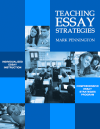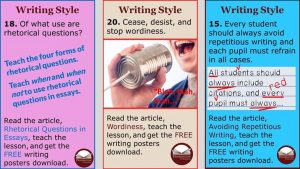
22 MLA Citations
Most mechanics manuals have either too few or too many of the MLA Citation Formats to be of real use to the student, author, or blogger. This one is just right with the most common 22 MLA citation formats. For the few sources that would not be well-suited to these 22, I recommend Purdue Writing Lab’s OWL and Son of Citation Machine. Of course, MLA (the Modern Language Association) is not the only citation format. Two others, APA (American Psychological Association) and CMS (Chicago Manual of Style), are preferred by most social science professors. Here’s a great side by side comparison of all three.
Most would agree that mechanics and grammar rules do serve a purpose. All academicians would agree that proper research citations do serve a purpose. Here’s the 22 MLA Citation Formats to help you proper cite the most common sources in your Works Cited at the end of a research paper or article and in-text citations and the end of individual direct or indirect quotations.
22 MLA Citation Formats
1 MLA Works Cited (Print Book) Pennington, Mark. TEACHING ESSAYS BUNDLE. El Dorado Hills, CA: Pennington Publishing, 2010. 212-213. Print. In-Text Citation: (Pennington 212-213)
2 MLA Works Cited (Print Encyclopedia) Pennington, Mark. “Works Cited.” Encyclopedia of Writing. 1st ed. 1. El Dorado Hills, CA: Pennington Publishing, 2010. Print. In-Text Citation: (Pennington 212-213)
3 MLA Works Cited (Print Journal) Pennington, M. “Works Cited.” TEACHING ESSAYS BUNDLE. 1.1 (2010): 212-213. Print. In-Text Citation: (Pennington 212-213)
4 MLA Works Cited (Print Magazine) Pennington, Mark. “Works Cited.” TEACHING ESSAYS BUNDLE. 2010: 212-213. Print. In-Text Citation: (Pennington 212-213)
5 MLA Works Cited (Print Newspaper) Pennington, Mark. “Works Cited.” London Bee 5 May 2011: B5. Print. In-Text Citation: (Pennington B5)
6 MLA Works Cited (Print Textbook or Anthology) Pennington, Mark. “Works Cited.” TEACHING ESSAYS BUNDLE. Ed. Jane Doe. El Dorado Hills: Pennington Publishing, 2010. Print. In-Text Citation: (Pennington 212-213)
7 MLA Works Cited (Print Letter) Pennington, Mark. “To Jane Doe.” 5 May 2011. El Dorado Hills, CA: 2011. Print. Letter. In-Text Citation: (Pennington)
8 MLA Works Cited (Print Document) Pennington, Mark. United States. Civil Air Patrol. District of Colombia: Department of Defense, 2011. Print. In-Text Citation: (Pennington 212-213)
9 MLA Works Cited (e-Book) Pennington, Mark. TEACHING ESSAYS BUNDLE. El Dorado Hills, CA: Pennington Publishing, 2010. 212-213. e-Book. < http://www.penningtonpublishing.com >. In-Text Citation: (Pennington 212-213)
10 MLA Works Cited (Online Journal) Pennington, Mark. “Works Cited.” Writing Journal 3.2 (2011): 1-3. Web. 26 Mar 2011. < http://www.penningtonpublishing.com >. In-Text Citation: (Pennington 1-3)
11 MLA Works Cited (Online Magazine) Pennington, Mark. “Works Cited.” TEACHING ESSAYS BUNDLE 5 May 2011: 22-26. Web. 26 Mar 2011. < http://www.penningtonpublishing.com >. In-Text Citation: (Pennington 22-26)
12 MLA Works Cited (Online Encyclopedia) Pennington, Mark. “Works Cited.” Encyclopedia of Writing. 2. 3. El Dorado Hills, CA: Pennington Publishing, 2011. Web. < http://www.penningtonpublishing.com >. In-Text Citation: (Pennington 111-113)
13 MLA Works Cited (Web Document) Pennington, Mark. “Works Cited.” TEACHING ESSAYS BUNDLE. Pennington Publishing, 5 May 2011. Web. 26 Mar 2011. < http://www.penningtonpublishing.com >. In-Text Citation: (Pennington)
14 MLA Works Cited (Web-based Videos or Images) “Sunset in Cancun.” Tropical Paradises. Web. 26 Mar 2011. <http://www.penningtonpublishing.com >. In-Text Citation: (“Sunset in Cancun”)
15 MLA Works Cited (Blog) Pennington, Mark. “Works Cited.” Pennington Publishing. Pennington Publishing, 5 May 2011. Web. 26 Mar 2011. <http://www.penningtonpublishing.com/blog>. In-Text Citation: (Pennington)
16 MLA Works Cited (Podcast) Pennington, Mark. “Works Cited.” Writing Podcasts. Pennington Publishing, 5 May 2011. Web. 26 Mar 2011. <http://www.penningtonpublishing.com>. In-Text Citation: (Pennington)
17 MLA Works Cited (E-Mail) Pennington, Mark. “Works Cited.” Message to Jane Doe. 5 May 2011. E-mail. In-Text Citation: (Pennington)
18 MLA Works Cited (Online Forum) Pennington, Mark. “Works Cited.” 5 May 2011. Online Posting to Writing Forum. Web. 26 Mar 2011. In-Text Citation: (Pennington)
19 MLA Works Cited (Online Government Document) Pennington, Mark. United States. Civil Air Patrol. District of Colombia: Department of Defense, 2011. Web. 26 Mar 2011. <http://www.departmentofdefense.gov>. In-Text Citation: (Pennington 22-26)
20 MLA Works Cited (Radio, Television, Film, or Recording) “Magical Kingdoms.” Behind the Scenes with the Mouse. Pennington Broadcasting Company: KTES, El Dorado Hills, 5 May 2015. Radio. 26 Mar 2011. In-Text Citation: (“Magical Kingdoms”)
21 MLA Works Cited (Online Interview) Pennington, Mark. Writing Works. Interview by Oprah Walters. 5 May 2011. Web. 26 Mar 2011. <http://www.penningtonpublishing.com/blog>. In-Text Citation: (Pennington)
22 MLA Works Cited (Lecture) Pennington, Mark. “Works Cited.” English-language Arts Class. El Dorado Hills Unified School District. El Dorado High School, El Dorado Hills. 5 May 2011. Lecture. In-Text Citation: (Pennington)
Information taken from MLA Handbook for Writers of Research Papers, 7th ed., 2009, sections 6.4.8, 7.7.1, and 5.6.2.
*****

Pennington Publishing Grammar Programs
Teaching Grammar, Usage, and Mechanics (Grades 4, 5, 6, 7, 8, and High School) are full-year, traditional, grade-level grammar, usage, and mechanics programs with plenty of remedial practice to help students catch up while they keep up with grade-level standards. Twice-per-week, 30-minute, no prep lessons in print or interactive Google slides with a fun secret agent theme. Simple sentence diagrams, mentor texts, video lessons, sentence dictations. Plenty of practice in the writing context. Includes biweekly tests and a final exam.
Grammar, Usage, and Mechanics Interactive Notebook (Grades 4‒8) is a full-year, no prep interactive notebook without all the mess. Twice-per-week, 30-minute, no prep grammar, usage, and mechanics lessons, formatted in Cornell Notes with cartoon response, writing application, 3D graphic organizers (easy cut and paste foldables), and great resource links. No need to create a teacher INB for student make-up work—it’s done for you! Plus, get remedial worksheets, biweekly tests, and a final exam.
Syntax in Reading and Writing is a function-based, sentence level syntax program, designed to build reading comprehension and increase writing sophistication. The 18 parts of speech, phrases, and clauses lessons are each leveled from basic (elementary) to advanced (middle and high school) and feature 5 lesson components (10–15 minutes each): 1. Learn It! 2. Identify It! 3. Explain It! (analysis of challenging sentences) 4. Revise It! (kernel sentences, sentence expansion, syntactic manipulation) 5. Create It! (Short writing application with the syntactic focus in different genre).
Get the Diagnostic Grammar, Usage, and Mechanics Assessments, Matrix, and Final Exam FREE Resource:

Grammar/Mechanics, Writing
citations, grammar rules, mechanics rules, MLA, MLA citations, pennington publishing, punctuation rules, research citations, Teaching Essay Strategies, Teaching the Language Strand










